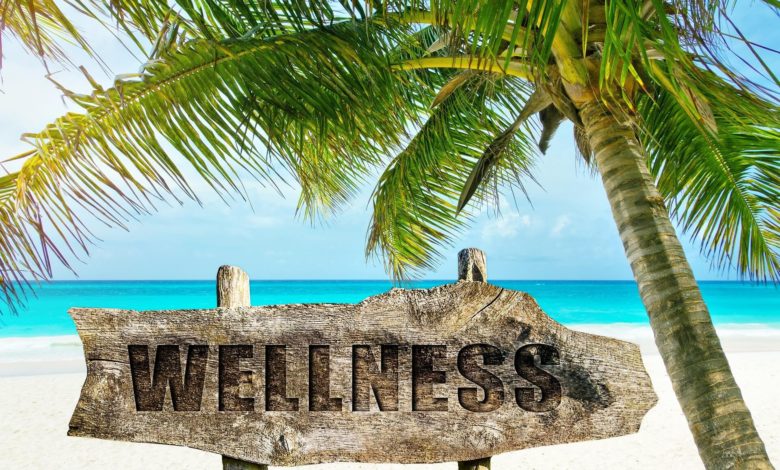
Medical tourism is also referred to as medical tourism, medical travel, health tourism or global healthcare. This tourism is a term originally created by travel agencies and mass media to describe the rapidly growing practice of crossing international borders to receive healthcare. This article contains information about what medical tourism is, its cost, quality, types of treatment and the history of medical tourism.
What is Medical Tourism?
Medical tourism can be defined as the process of traveling outside the country of residence for medical care. The increase in popularity of this tourism has attracted the attention of politicians, researchers and media. Initially, this term meant that patients travel from less developed countries to developed countries to have treatments not available in their home country. In other words, while people travel from richer countries to less developed countries to access health services, both qualitative and quantitative changes are taking place in patient mobility today. Such change is mostly due to increased marketing and online consumer information about relatively low-cost treatment, availability of cheap flights, and availability of medical services in less developed countries. The reason that really put the word tourism in the concept of medical tourism is that people often stay in foreign countries after medical treatment. Thus, people can benefit from their visits by traveling, making day trips or participating in other traditional tourism activities.
Cost in Medical Tourism
Medical tourism represents a multi-billion dollar phenomenon worldwide that is expected to increase significantly over the next decade. For the individual interested in healthcare, the key factor involved in the decision to seek medical care abroad is cost. While healthcare costs are rapidly rising in many parts of the world, many employers and insurance companies have started to see medical tourism as a way to reduce costs. Many countries around the world are beginning to see financial benefits from this developing market, so premium medical services are offered at significantly lower prices. The main reason why clinics and hospitals in developing countries decrease their prices is directly related to the economic situation of the country. There is a direct correlation with the country’s gross domestic product per capita, which represents income levels. As a result, surgery prices in countries that promote medical tourism are 30% to 70% lower than in the USA.
Quality in Medical Tourism
There are two main components of service quality in the health sector; technical or mechanical quality and serviceable or functional quality. While technical equipment is at the center of the diagnosis algorithm of the patients, the services provided such as the patient-oriented services of the staff, nurses and most importantly the doctors and assistants are measured in functional quality health centers. However, service quality in the medical tourism industry plays a vital role in attracting customers. One of the main obstacles to accepting medical tourism is insufficient perception of quality. The key to tackling this is to use adequate marketing strategies and quality assessment through accreditation from an internationally recognized institution. This type of accreditation is crucial to strengthening confidence in the quality of healthcare. If there is a link with reputable hospitals or healthcare systems in industrialized countries after accreditation, this trust can be even stronger. Once healthcare providers are accredited and part of international referral networks, they can be appropriately rated in terms of risks.
Types of Treatment in Medical Tourism
Different treatment categories and their availability are also an important factor in the decision to enter medical tourism. The most common types of procedures followed by patients during medical tourism trips are optional cosmetic surgery, dentistry, organ transplantation, cardiac surgery, and orthopedic surgery. However, a wide variety of services can be obtained through medical tourism, from various basic treatments to different traditional and alternative therapies. Also, reproductive tourism and outsourcing for reproduction is increasing in popularity day by day, which is the practice of traveling abroad for surrogate pregnancy. This application is done by in vitro fertilization and other assisted reproductive technology methods.
In addition to cost, the other important factor responsible for medical tourism growth is access. Either the technology is not available or its lack due to the bans in countries can then lead to medical tourism. Common examples are cytoplasmic transfer or stem cell therapy.
Medical Tourism History
The practice of traveling for health and medical reasons has a long history. Even ancient civilizations noticed the healing effects of mineral spas and sacred temple baths. For example, the Sumerians built more than four thousand years ago health complexes around hot springs, including temples with flowing pools. The ancient Romans built resorts with thermal health spas, and therapeutic temples flourished throughout the Greek territory. Ancient Greeks are known for their travels to the sanctuary of Asklepios, the god of healing, who is believed to cure different ailments in dreams. This sanctuary is actually a small region called Epidauria in the Saronic Gulf, it is considered the birthplace of medical tourism as far as it is known today.
Europe
The Europeans in the sixteenth and seventeenth century are responsible for the development of a modern leisure resort concept. Beach resorts in the UK (such as Blackpool or Margate) were built because of the British elite’s belief that there are true healing powers in sea waters and sea air. In a very short time, England witnessed an explosion of different spa towns and sanatoriums that could afford to make the trip. Spas and mineral water have been used to heal various skin infections, poor digestion, and rheumatism. In mainland Europe, Switzerland has a large number of towns that grow around mineral resources (St. Moritz, Lausanne, Interlaken and Baden). People also flocked to Austria (Vienna), Hungary (Budapest) and Germany (Baden-Baden and Wiesbaden). The formation of railways has increased the flow of people to more distant coastal and coastal resorts, providing a unique and escape from urbanization, as well as the opportunity to practice what is seen as a healthy sun seeking pleasure.
North America
The discovery of the New World has created new destinations for medical travelers from Europe. Dutch and British colonists built log huts alongside mineral springs in the 1600s. During this period, Native Americans in the New World have significantly mastered the healing arts. Mineral resources were used for the development of hot springs tourism in the United States and Canada and the first national parks were established around it. The physical morphology of the springs results in distinctive natural landscapes that help attract visitors from all over the world. For example, Wyoming is like Yellowstone National Park in the USA.
In the nineteenth century, wealthy tuberculosis patients from Europe traveled frequently to the southwestern United States in search of different climatic conditions to cure their illnesses and continued to live there. Such behavior is likely to precede today’s lifestyle retirement and migration for similar reasons, such as improving the quality of life. However, traveling with the intention of having treatments such as cosmetic surgery, dental care, and other procedures is a relatively new phenomenon that began around the world only a few decades ago.
Asia
Asia also has a medical tourism history. Japan’s wealth of natural mineral resources has represented a favorite health center for centuries and has also become a central feature of Japanese tourism today. These springs are known to have healing powers that come from their mineral content. Different warrior tribes also noticed these resources and used them to heal their wounds, relieve their suffering, and heal from their wars.
Also, the popularity of Yoga and Ayurvedic medicine grew in India five thousand years ago, with constant medical travelers and spiritual students flocking to India to pursue the benefits of these alternative healing methods. India gained a reputation as the center of the spiritual, cultural and medical advancement of the East when Buddhism emerged 2500 years later. It is also one of the most popular destinations for medical tourists today.





